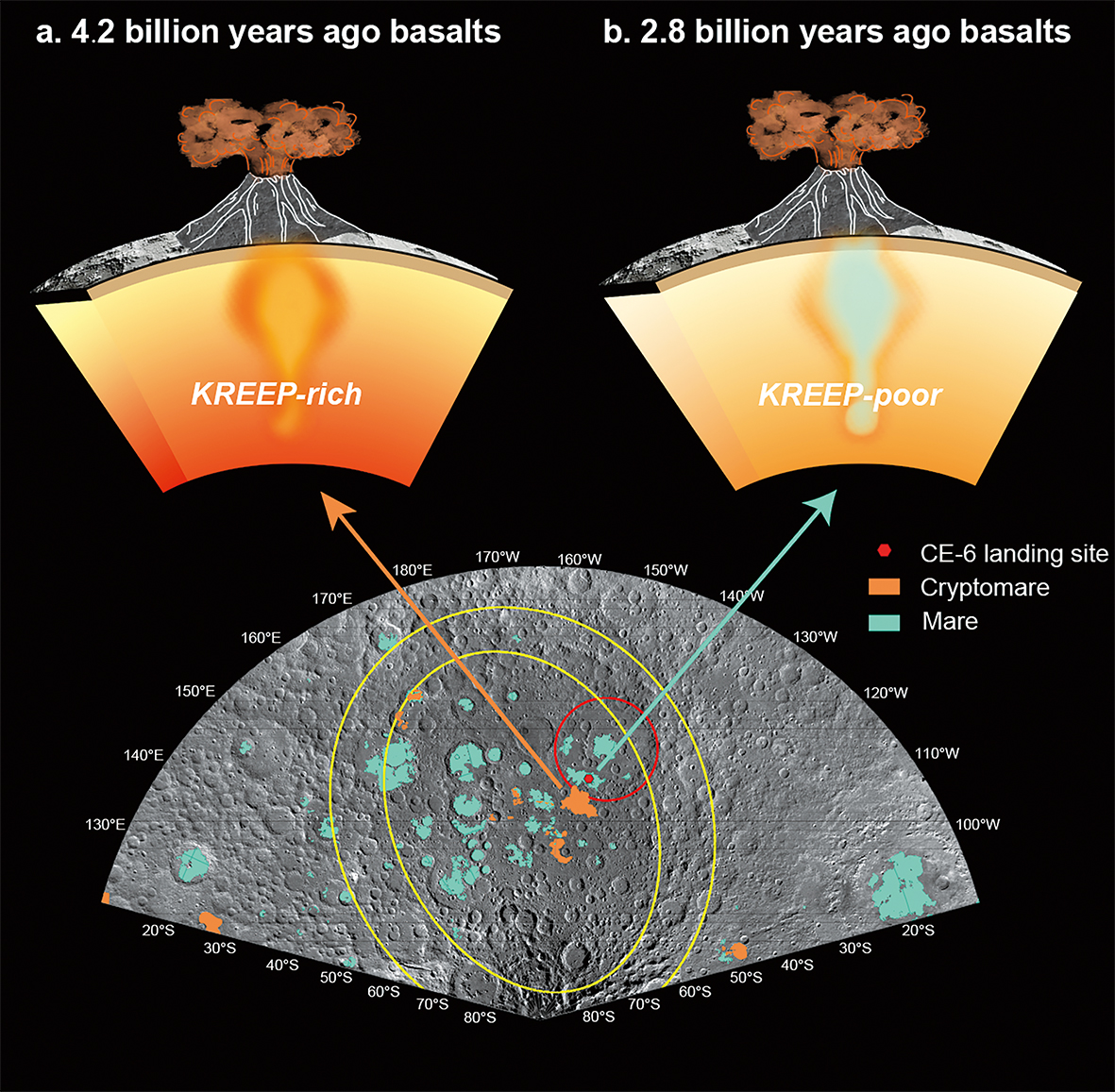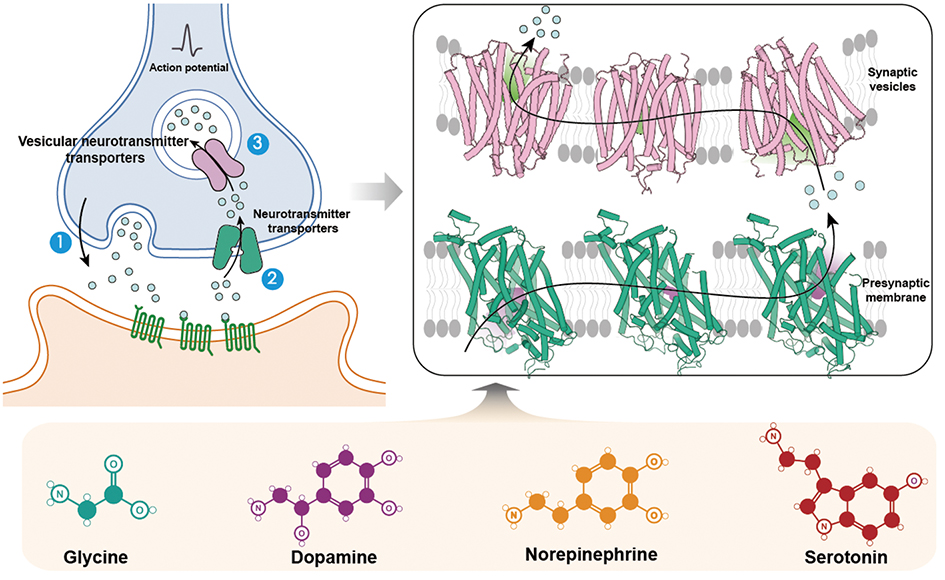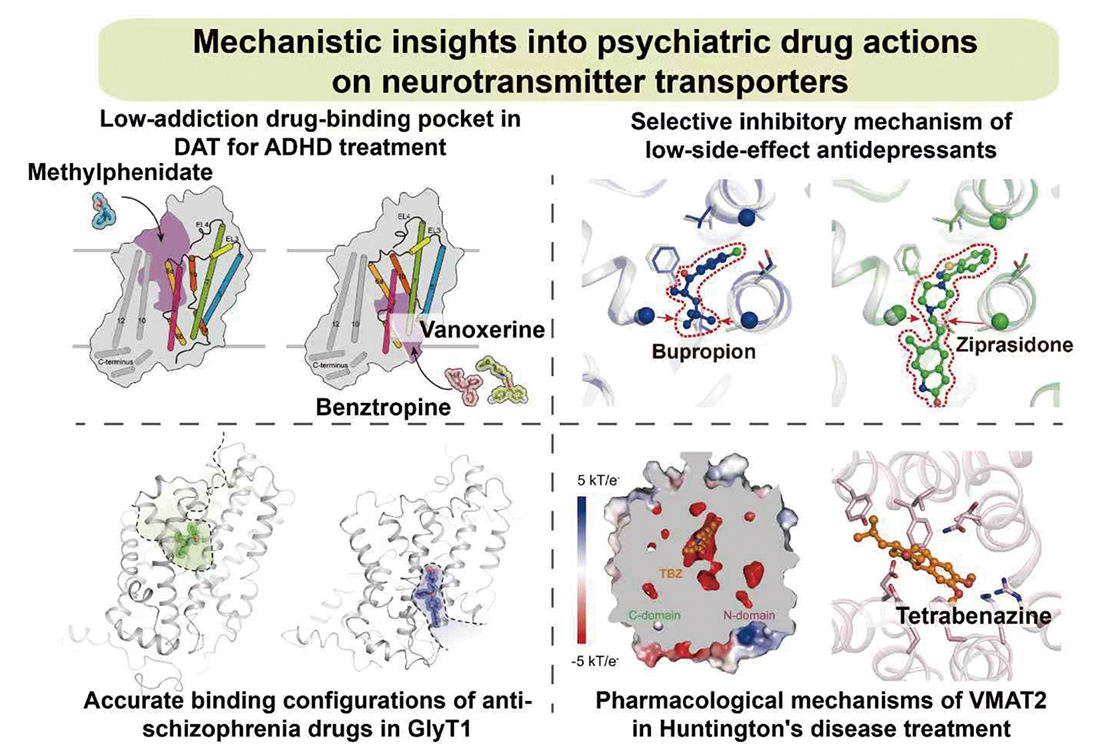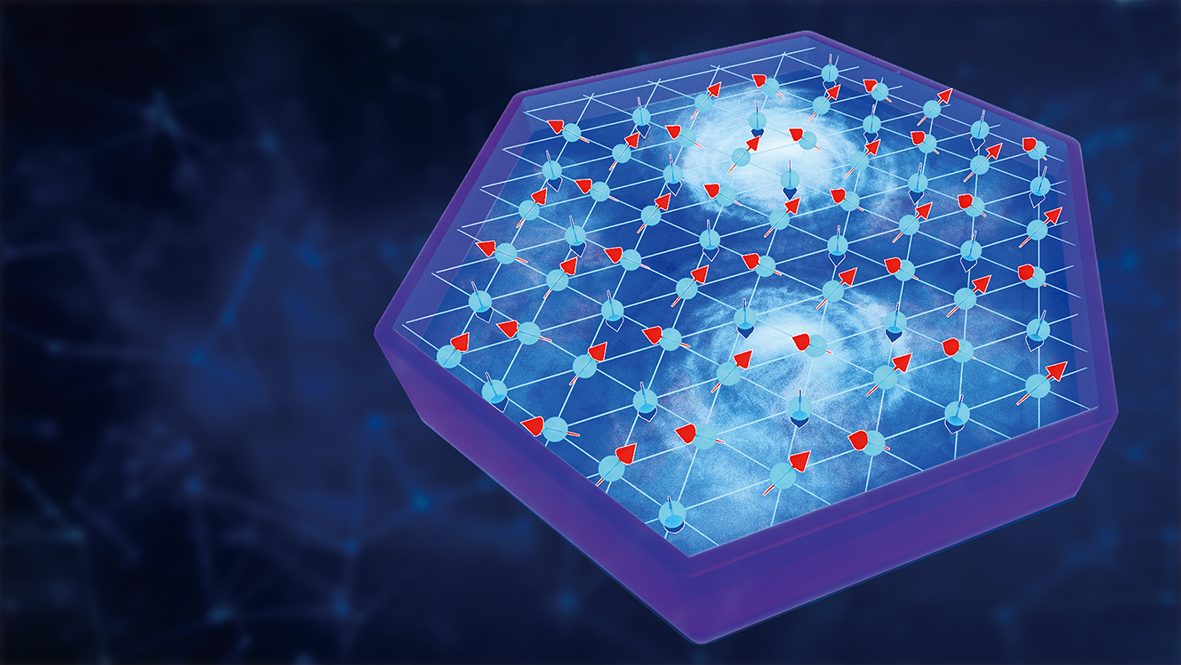By SONG Jianlan and YAN Fusheng
On March 27, the National Natural Science Foundation of China (NSFC) released the annual “Top 10 Science Advances of China” for the year 2024. Topping the list was a research that revealed volcanic activities occurring about 2.8 billion years ago on the far side of the Moon, based on samples returned by the Chang’e-6 (CE-6) mission, the first successful effort to bring back samples from the lunar farside.
This marked the 20th release of the annual “Top 10 Science Advances of China”. The selection has been operated annually as an effort to promote advancement in fundamental science, and to increase the public awareness and literacy of science. A total of over 700 research results were recommended by different institutions to compete for the top 10 ranking, and a panel of about 140 experts across different disciplines reviewed the candidates to produce a shortlist of 31 candidates. Subsequently, over 2,700 distinguished scholars, including about 440 Members of the Chinese Academy of Sciences (CAS) and the Chinese Academy of Engineering decided the finalists via real-name voting. Finally, a consultative group at NSFC approved the result before the official release.
The above-mentioned research based on CE-6 sample analyses was jointly accomplished by scientists from several institutes under the CAS. Another two researches led by CAS scientists, the discovery of transport mechanism of monoamine neurotransmitters and regulation of related drugs for psychiatric diseases, and the one of spin supersolid with giant magnetocaloric effect and the new mechanism for extremely low temperature refrigeration, also entered the top 10 list, respectively ranked the third and fifth.
Now let’s go into the detail of their discoveries.
CE-6 Samples Reveal Lunar Farside Volcanism 2.8 Billion Years Ago
On June 25, 2024, CE-6 mission successfully brought back 1,935.3 grams of samples from the South Pole-Aitken (SPA) basin on the farside of the Moon. Filling a long-existing gap, these samples provide direct evidence from this once inaccessible hemisphere for research into many open questions about the Moon.
Among these open questions is the “hemispheric dichotomy” issue. The near- and the far- sides of the Moon are greatly different in many aspects, including terrains, and chemical (e.g. thorium) abundances, crust thickness, and magma activities. Before CE-6, humanity had only lunar samples from the near side; now thanks to the 1,935.3 grams of samples brought back by CE-6, we eventually have the unique opportunity to explore possible mechanisms underlying this dichotomy, with materials directly from the farside.
Led by Prof. LI Qiuli from the CAS Institute of Geology and Geophysics (IGG), CAS Member Prof. XU Yigang from the Guangzhou Institute of Geochemistry (GIG), CAS and Prof. LI Chunlai from the National Astronomical Observatories, CAS (NAOC), three teams of CAS scientists independently analyzed the CE-6 samples in cooperation with partners, and respectively reported their discoveries in peer-review journals Nature, Science and National Science Review. These have marked the first results from CE-6 sample research.
Their research revealed that in many aspects, the CE-6 samples are very different from those returned by Apollo missions and the CE-5 mission. CE-6 soil samples are much looser in density, and higher in aluminum and calcium abundances, with a bimodal distribution in grain-size. The soil samples contain different lithologic compositions, including basalts, breccia, agglutinate, glass and light-colored rock fragments. Comparing with CE-5 samples, these soil samples contain more plagioclase, and less olivine, demonstrating distinct compositions in contrast with the local basalts, indicating complicated sources. The local basalts fall in a low-titanium and low-aluminum type, and strontium-neodymium-lead isotopes suggest that it originated from a mantle source highly depleted of KREEP elements (potassium, rare earth elements and phosphorus). Such a depleted mantle source in the lunar farside may be responsible for the scarce of volcanism on the farside.
Radioisotopic dating gave statistically consistent results of the age for the local basalts, indicating an origin from volcanic activity occurring about 2.8 billion years ago. This age has filled the temporal gap spanning between 2.0 to 3.2 billion years ago in the cratering chronology of the Moon. Besides, the researchers also identified a basalt sample produced by volcanic eruption occurring about 4.2 billion years ago, indicating a long-term volcanism on the lunar farside.
Their research on CE-6 samples revealed the unique characteristics of lunar farside, filling in both temporal and spatial gaps of lunar science with direct evidence for further research on volcanism and catering history of the farside. This has offered a new perspective to understand the great discrepancy between the two hemispheres in terms of mantle composition, volcanism and cratering history.

Based on analyses of samples returned by Chang’e-6 (CE-6) mission from the far side of the Moon, CAS scientists revealed two episodes of volcanic activities on the lunar farside, one occurring about 4.2 billion years ago, and another 2.8 billion years ago. The younger one represents the dominant episode of volcanism for the sampling site, the South Pole-Aitken basin. Volcanism occurring at this young age had never been observed before. The research demonstrates that on the lunar farside, volcanism persisted for at least 1.4 billion years since about 4.2 billion years ago. (Image by IGG)
Transport Mechanism of Monoamine Neurotransmitters in Nervous System and Their Interaction with Existing Psychotropic Medicines
Ranked third in the Top 10 Science Advances 2024 was a combination of breakthroughs in neural transmission mechanisms and their regulatory processes, achieved by researchers from the Institute of Biophysics (IBP) and the Institute of Physics (IOP), both under the Chinese Academy of Sciences (CAS). They decoded the underlying transport mechanism of monoamine neurotransmitters — whose improper operation could lead to mental disorders — and elucidated how existing psychotropic drugs interact with these pathways, paving way for developing precision therapeutics.
The human nervous system operates as a sophisticated communication network, transmitting signals with remarkable speed and precision. Central to this process are synapses —specialized junctions where neurons relay information via neurotransmitters. These chemical messengers bridge the synaptic cleft, binding to receptors on postsynaptic neurons to propagate excitatory or inhibitory signals.
Key players like dopamine, noradrenaline, acetylcholine, and glycine perform an intricate dance in the brain, each orchestrating a distinct emotional rhythm: dopamine drives reward and motivation, noradrenaline enhances alertness, and glycine suppresses neural overexcitation to maintain balance.
After fulfilling their roles, neurotransmitters are efficiently recycled through a “green system”: presynaptic transporters reclaim them into neurons, while vesicular transporters repackage them into synaptic vesicles for reuse.
This dual-system not only reflects the nervous system’s efficiency and sustainability but also resets synapses for the next signal, ensuring a precise balance between neuronal activation and inhibition.
However, when things go wrong, it can lead to mental disorders, marked by significant disruptions in cognition, emotion, or behavior, posing severe impacts on both individuals and society. Common conditions include depression, attention deficit hyperactivity disorder (ADHD), and schizophrenia. The “monoamine hypothesis”, proposed in the 1950s, links depression to reduced levels of monoamine neurotransmitters (e.g., serotonin and noradrenaline) in the synaptic cleft. Similarly, ADHD is tied to imbalances in dopamine and noradrenaline, while schizophrenia is linked to dysfunction of NMDA receptor — another specialized “signal coordinator” on nerve cells. These findings underscore how mental disorders arise from aberrant neurotransmitter concentrations and disrupted synaptic signaling.

Transport mechanisms of multiple neurotransmitters. (Graphic: IBP)
The key to treating these mental disorders lies in modulating neurotransmitter concentrations within the synaptic cleft. Neurotransmitter transporters serve as molecular regulators by reuptaking neurotransmitters back into presynaptic neurons through and then packaging them into synaptic vesicles for storage. Precise pharmacological intervention targeting these “courier” proteins enables precise control of synaptic neurotransmitter levels.
When transporters located on the presynaptic membrane are inhibited, neurotransmitter reuptake becomes blocked, leading to elevated neurotransmitter concentrations in the synaptic cleft. Conversely, inhibition of vesicular transporters such as the vesicular monoamine transporter 2 (VMAT2) disrupts the packaging and subsequent release of neurotransmitters, resulting in reduced synaptic availability. This bidirectional regulatory capacity establishes neurotransmitter transporters as critical therapeutic targets for psychiatric conditions including depression and ADHD.
However, the critical role of neurotransmitter transporters as therapeutic targets is counterbalanced by unresolved mechanistic challenges. While these transporters serve as validated intervention points for restoring neural communication with minimized side effects, fundamental processes — including substrate recognition, ion coupling, and conformational dynamics — remain poorly understood. This knowledge gap directly impacts clinical outcomes: widely used medications like SSRIs (for depression) and methylphenidate (for ADHD) demonstrate significant side effects despite targeting these transporters, underscoring the need for mechanistic clarity to advance precision therapeutics.
To address this, Dr. ZHAO Yan’s team from IBP has been actively engaged in using cryo-electron microscopy (cryo-EM) studies of critical neurotransmitter transporters. By the end of August 2024, they have uncovered the mechanisms by which neurotransmitter transporters — such as the dopamine transporter (DAT), norepinephrine transporter (NET), and glycine transporter 1 (GlyT1) — utilize ion gradients to reuptake neurotransmitters. Their work captured these transporters in several critical conformational states: outward-open (ready to load neurotransmitters), occluded (mid-transport), and inward-open (ready to release neurotransmitters). These findings provide a detailed map of the neurotransmitter reuptake journey from the synaptic cleft. Furthermore, in collaboration with Dr. JIANG Daohua’s team from the IOP, they elucidated the mechanism by which monoamine neurotransmitters are refilled into vesicles via VMAT2, preparing them for the next signaling process (the top figure). The atomic blueprints of these neurotransmitter “couriers” and their working mechanisms are reported in Nature and Cell.

Mechanisms of action of psychiatric drugs. (Graphic: IBP)
In parallel with these discoveries, the research team has committed to elucidating the molecular mechanisms of psychiatric medications targeting the major psychiatric disorders including depression, schizophrenia, substance addiction, and ADHD. Through integrating high-resolution cryo-EM structural analysis with functional experiments, they have systematically deciphered the binding patterns and selective mechanisms of various drug molecules for specific transporters.
Notable achievements include their elucidation of how several schizophrenia drug candidates inhibit the GlyT1 at the molecular level. They have also determined the structural basis for the selective action of atypical antidepressants like bupropion on the NET, as well as the mechanism by which first-line ADHD treatments such as methylphenidate specifically target the DAT. In addition, they also revealed distinct binding modes of classical inhibitors, including reserpine and tetrabenazine, on VMAT2. Collectively, their work has clearly demonstrated the diverse drug-binding modes of neurotransmitter transporters (the lower figure on the last page). These findings not only provide crucial support for understanding clinical applications of existing medications, but also significantly advance the development of next-generation psychiatric drugs with improved efficacy, reduced side effects, and lower addiction potential. (Source: IBP)
Discovery of Spin Supersolid with Giant Magnetocaloric Effect and the New Mechanism for Extremely Low Temperature Refrigeration
Ranked fifth, this research marks a breakthrough in a long-sought-after exotic condensed state of matter called supersolidity. This matter state features a paradoxical coexistence of solidity and superfluidity: while the constituent particles align in a certain lattice pattern to form a solid, they also collectively demonstrate superfluidity without exhibiting any friction between each other. The involved scientists not only successfully observed this surreal phenomenon in a novel compound Na2BaCo(PO4)2 (NBCP), but also found in this magical material a fantastic property that makes it a promising coolant for extremely low temperature refrigeration and maintenance. This opens a new route toward helium 3-free cooling to temperatures lower than 1 kelvin (1K), soothing worries about the global scarcity of helium, a noble gas widely used in aerospace science, quantum technologies, materials science research and other frontiers.
Those who brought the dreamlike supersolidity into reality are scientists from CAS and Beihang University of China. The joint team led by Prof. SU Gang and Prof. LI Wei from the CAS Institute of Theoretical Physics (ITP) and the University of CAS (UCAS), Prof. SUN Peijie and Dr. XIANG Junsen from the CAS Institute of Physics (IOP), and Prof. JIN Wentao from Beihang, and other collaborators, observed in their experiments the evidence for a quantum magnetic analogue of this fantastic condensed state — spin supersolidity in single crystals of NBCP, which was first synthesized in 2019.

Spin supersolidity (Image: IOP)
Since the 1970s when British theoretical physicist, Nobel laureate Anthony J. Leggett, together with others, raised the question whether or not a solid could be a superfluid, this paradoxical supersolidity has been enthusiastically pursued by physicists across the world. The year 2004 saw some sort of hope when US scientists reported their “probable” observation of supersolidity in liquid helium; unfortunately, later experiments by the same lab disproved its reliability.
An initiative proposed in 1962 by Nobel laureate YANG Zhenning (C. N. Yang), a CAS Member, fueled new hope for the search of supersolids. He introduced the concept of off-diagonal long-range order to describe superfluidity and superconductivity, differentiating from the classic diagonal long-range order used in previous description for conventional solid order. The renewed theoretical concept of supersolidity has since become a coexistence of off-diagonal and diagonal long-range orders. This has inspired further theoretical explorations in possible lattice patterns or crystalline structures that might give rise to supersolidity.
Recent years saw the booming developments of a new type of materials that exhibit frustrated quantum magnetism, providing a new platform for the pursuit of supersolidity. Such special materials share a common trait: their quantum magnetic moments can never achieve an optimal distribution to minimize the system’s overall energy, due to some competing spin interactions inherent to their structures. This “frustration” can couple with their quantum spin fluctuations to exhibit exotic physical properties, for example quantum spin liquid.
The new material NBCP is a quantum antiferromagnet with a cobalt-based triangular lattice structure, and earlier research revealed in it very strong spin fluctuations confined to a very low energy, indicating possible appearance of quantum spin liquid. However, the nature of its ground states remained unclear.
Profs. LI Wei and SU Gang’s groups made further theoretical calculations based on quantum many-body theory, and established a model that can ideally describe the microscopic interactions of potential supersolids. They hence inferred that NBCP in its nature is not a quantum spin liquid, but a long-sought spin supersolid.
To obtain microscopic evidence for the predicted supersolidity, the team synthesized high-quality NBCP sing-crystals, and performed the neutron diffraction experiment, the elastic and inelastic neutron scattering experiments at extremely low temperatures, the low-temperature thermal measurements and adiabatic demagnetization measurements. For this sake, they specially fabricated a device to meet the strict experiment demands, including excellent thermal isolation and sensitivity to accurately map out NBCP’s entropy landscape at ultra-low temperatures, as well as its quantum spin states and transitions.
Eventually the team successfully observed the expected evidence showing the existence of the spin supersolidity. The single-crystal neutron diffraction measurements and inelastic neutron scattering experiments demonstrated the coexistence of solid and spin superfluid orderings. Moreover, they further observed a marvelous phenomenon called giant magnetocaloric effect in the crystals: when put in adiabatic demagnetization, the cooling material abruptly dropped to an extremely low temperature near to its spin supersolid transition point, touching a temperature as low as -273.056°C (94 mK). The measurements obtained in the experiments, as well as the demagnetization cooling profile both agree very well with theoretical calculations. This suggests a new viable route to extreme cooling without helium 3 — against the rising concerns about shortage of this rare gas, this provides a wonderful alternative coolant.
The team reported their discoveries online in Nature on January 11, 2024.
Based on this newly discovered effect, the team developed a prototype of new-generation instrument for extreme cooling, and successfully achieved ultra-low temperatures ranging from 2 K to below 100 mK. So far, this instrument has been put into practical application.
The team is now making further low-temperature studies on other frustrated quantum materials, achieving comparably low or even lower temperatures in several of them. This highlights the promising potential of this type of materials in extreme cooling.

